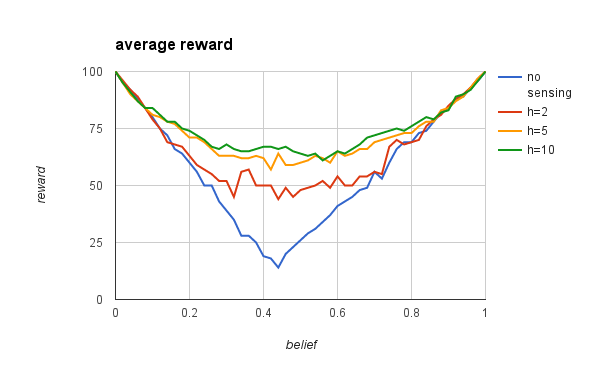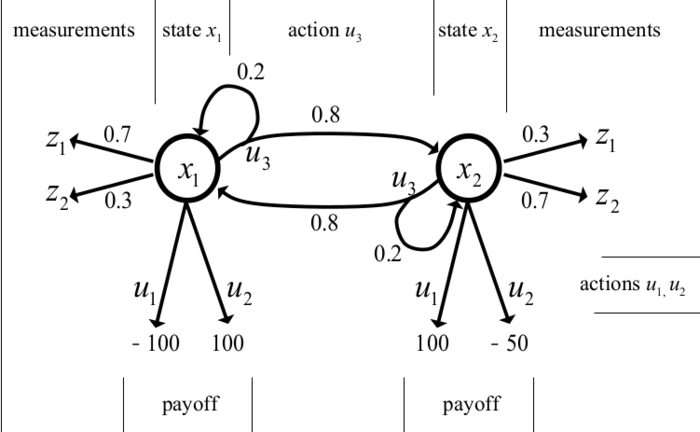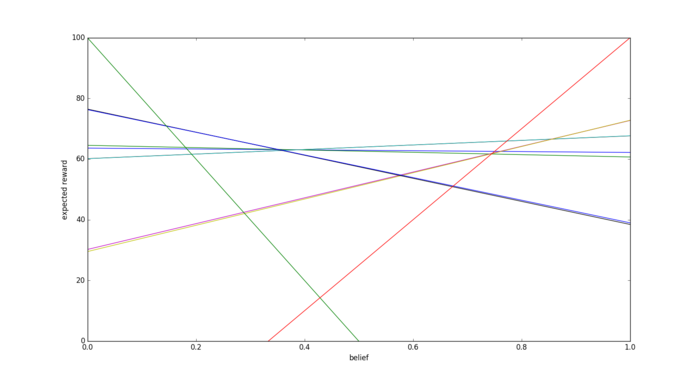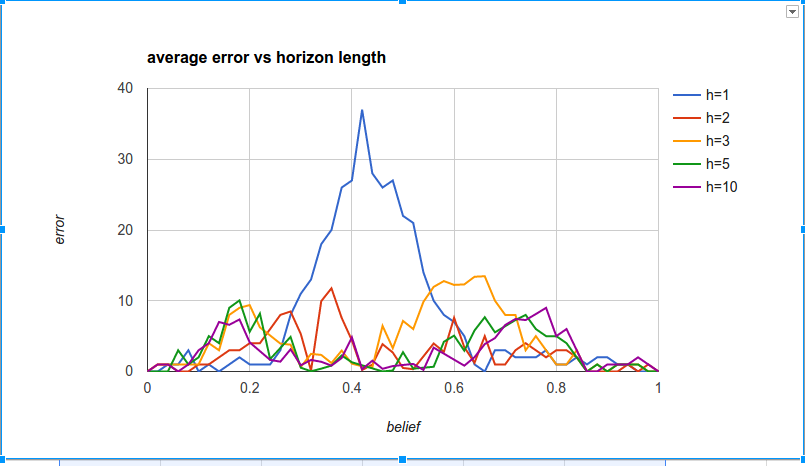Simulacia POMDP
Project objective
The goal of this project was to create a program for computation and evaluation of POMDP algorithm on simple two-state scenario. More precisely, my script computes piecewise linear value function over belief space for a given time horizon, then this result is used in a simulation of an agent with incomplete state awareness.
Requirements
This project can be run with either Python 2.7 or higher. Python 3.x is also supported. Another requirement is installed Matplotlib module for value function plotting.
Parameters of the example
The simulated scenario consists of an robot agent with two possible states and three actions, two of which are terminal actions (can be taken only once). Each terminal action has some associated reward, depending on the state of the agent.
The actions u1 and u2 are terminal actions with immediate payoffs.
The action u3 is a sensing action that potentially leads to a state transition.It costs -1.
The horizon is finite and γ=1.
In POMDP agent does not have certain knowledge about state, only belief. In this example, we have two-state belief that can be held by one variable. If belief = 0, agent is certain that he is in state x2, if belief is 1, he is certainly in state x1.
Moreover, action u3 can potentially lead to state transition with probability 0.8.
z1 and z2 are sensing probabilities, robot can sense before executing any action, thus improving its belief about which state it is in.
For more information about exact parameters and used algorithm, see [1]
Source code
Zipped folder containing the project source code.
Results
This image graphically represents horizon 10 piecewise linear value function computed by this program. Average reward obtained by simulated agent using this value function is here plotted against starting belief:
Results of simulation with horizon=10

We can see that prediction error is worse near kinks in our value function. But prediction error rates do not change that much with changing horizon length, except from horizon 1, where robot is not allowed any sensing action.
Below is the plot of average rewards for various allowed horizons.



